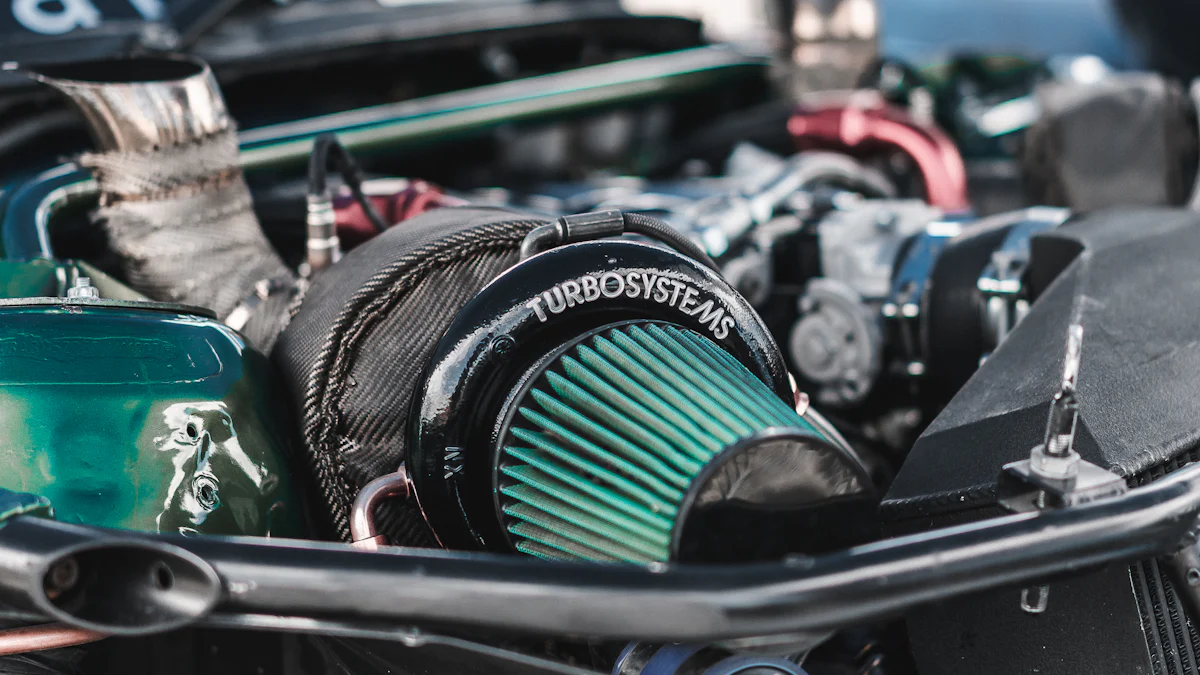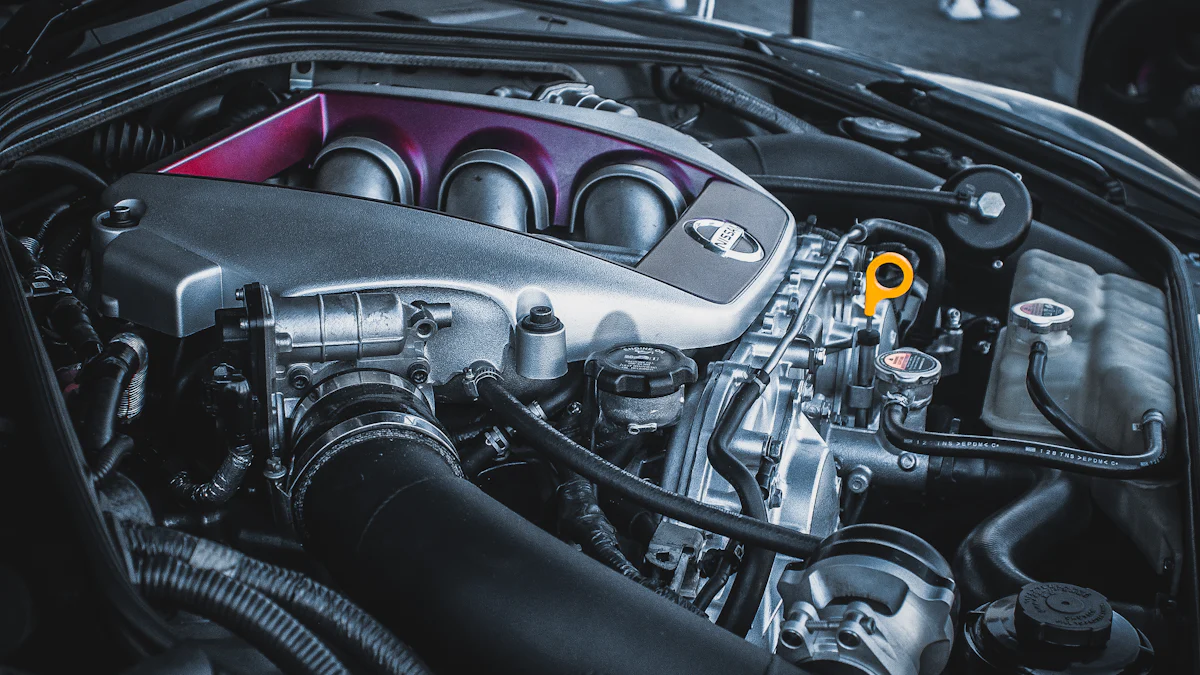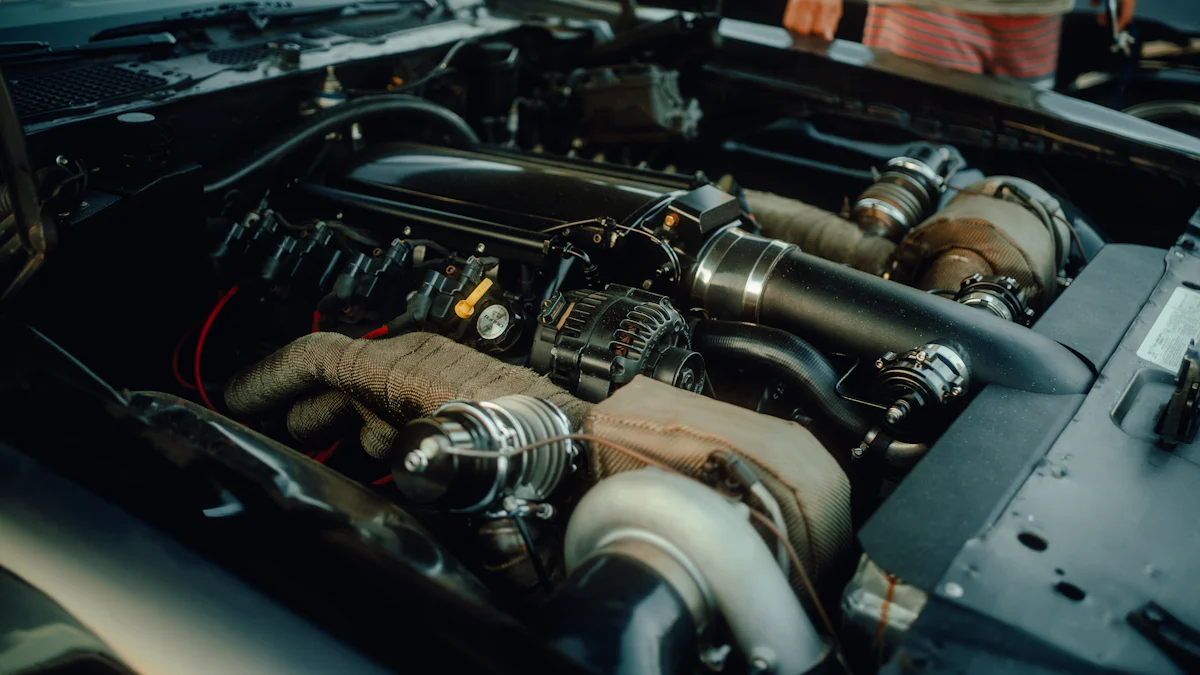
In the realm of vehicle performance, sensors stand as silent guardians, orchestrating a symphony of data for optimal operation. Modern vehicles rely on these technological marvels to navigate the complexities of combustion and efficiency. Among them, the Engine exhaust manifold pressure sensor emerges as a key player, monitoring vital metrics to fine-tune engine performance. This blog delves into the intricacies of these sensors, unraveling their significance in enhancing driving dynamics and fuel economy.
How Exhaust Manifold Pressure Sensors Work

Sensor Functionality
The Engine exhaust manifold pressure sensor operates as a silent observer, meticulously measuring Exhaust Pressure within the system. It captures crucial data on pressure variations, enabling precise adjustments for optimal engine performance. This sensor acts as a vigilant guardian, ensuring seamless communication by transmitting essential information to the Engine Control Unit (ECU).
Measuring Exhaust Pressure
In the intricate dance of automotive mechanics, the exhaust manifold pressure sensor takes center stage in gauging the force exerted by exhaust gases. By accurately measuring these pressures, it provides real-time feedback to the ECU, allowing for dynamic adjustments to fuel delivery and combustion timing.
Data Transmission to ECU
Once armed with valuable pressure data, the exhaust manifold pressure sensor embarks on its mission to relay this information to the ECU. Through a sophisticated network of electrical connections, this sensor communicates vital insights that influence engine operation. This seamless transmission ensures that the engine functions harmoniously with optimal efficiency.
Installation and Placement
The strategic placement of the Engine exhaust manifold pressure sensor is critical for its operational efficacy within the vehicle’s exhaust system. Nestled in a position that allows direct exposure to exhaust gases, this sensor captures accurate readings essential for performance enhancement.
Location in the Exhaust System
The exhaust manifold pressure sensor finds its home nestled near the junction where exhaust gases merge before exiting through the tailpipe. This prime location offers a vantage point for capturing precise pressure measurements, contributing to enhanced engine dynamics and fuel efficiency.
Connection to Other Components
In its quest for synergy with other automotive components, the Engine exhaust manifold pressure sensor establishes vital connections within the intricate web of vehicle systems. Its seamless integration with related parts ensures cohesive functionality and enables holistic optimization of engine performance.
Types of Exhaust Manifold Pressure Sensors
Diving into the realm of diversity, two distinct categories emerge: Original Equipment Manufacturer (OEM) sensors and Aftermarket sensors. Each variant brings unique characteristics and compatibility nuances tailored to different vehicle models.
OEM vs. Aftermarket Sensors
OEM sensors bear the seal of authenticity from vehicle manufacturers, guaranteeing precision engineering and seamless integration with specific makes and models. Conversely, Aftermarket sensors offer versatility across a broader range of vehicles while maintaining high standards of quality and performance.
Compatibility with Different Vehicle Models
The universal appeal of Aftermarket sensors lies in their adaptability to various automotive platforms, catering to a spectrum of makes and models. OEM sensors excel in tailor-made compatibility with specific vehicles, ensuring unparalleled accuracy in capturing exhaust pressures.
Benefits of Exhaust Manifold Pressure Sensors

Improved Fuel Efficiency
Enhancing fuel efficiency stands as a paramount goal for drivers seeking cost-effective and sustainable journeys. The integration of Engine exhaust manifold pressure sensors plays a pivotal role in achieving this objective by optimizing the Air-Fuel Mixture within the combustion chamber. Through meticulous monitoring of exhaust pressures, these sensors facilitate precise adjustments to the fuel delivery process, ensuring an ideal blend for efficient engine operation.
In the pursuit of reduced fuel consumption, Engine exhaust manifold pressure sensors emerge as silent champions, silently orchestrating a symphony of data to enhance driving dynamics. By fine-tuning the air-fuel ratio with unparalleled accuracy, these sensors enable engines to operate at peak efficiency levels, minimizing wastage and maximizing mileage.
Enhanced Engine Performance
The quest for enhanced engine performance finds a reliable ally in Engine exhaust manifold pressure sensors, revolutionizing acceleration dynamics. With a keen focus on delivering Smoother Acceleration, these sensors provide real-time feedback to the engine control unit, enabling seamless adjustments for optimal power delivery. Drivers can experience a harmonious transition between gears, translating into a smoother and more responsive driving experience.
Reducing engine vibrations stands as a hallmark of superior engineering, a feat made possible by the precision of Engine exhaust manifold pressure sensors. By capturing and analyzing exhaust pressures with unparalleled accuracy, these sensors contribute to minimizing vibrations that may disrupt the driving experience. The result is an engine that operates with finesse and minimal disturbances, elevating both performance and comfort levels.
Emission Control
In the realm of emission control, Engine exhaust manifold pressure sensors serve as vigilant gatekeepers, monitoring Exhaust Gases with unwavering precision. By scrutinizing emissions at their source, these sensors enable vehicles to comply with stringent environmental regulations while maintaining optimal performance levels. This dual functionality ensures that drivers can enjoy enhanced engine dynamics without compromising on eco-friendliness.
Ensuring compliance with regulations remains a top priority for vehicle manufacturers and drivers alike. The integration of Engine exhaust manifold pressure sensors guarantees adherence to emission standards by providing real-time insights into exhaust compositions. By facilitating proactive measures to mitigate harmful emissions, these sensors pave the way for environmentally conscious driving practices that prioritize sustainability.
Maintenance and Troubleshooting
Regular Maintenance Tips
Cleaning and Inspection
Regular maintenance of Engine exhaust manifold pressure sensors is paramount for ensuring optimal vehicle performance. Begin by carefully inspecting the sensor for any signs of dirt, debris, or corrosion that may hinder its functionality. Utilize a gentle cleaning solution to remove any buildup and ensure clear sensor readings.
Replacing Faulty Sensors
In cases where cleaning does not resolve issues with the Engine exhaust manifold pressure sensor, prompt replacement is necessary. Look out for symptoms such as erratic engine behavior, decreased fuel efficiency, or persistent warning lights on the dashboard. Consult your vehicle manual or a trusted mechanic for guidance on selecting and installing a new sensor.
Common Issues and Solutions
Identifying Symptoms of Failure
Detecting potential malfunctions in the Engine exhaust manifold pressure sensor is crucial for preemptive troubleshooting. Watch out for indicators like rough idling, sluggish acceleration, or unusual engine noises. These symptoms often point towards sensor dysfunction, prompting timely intervention to prevent further damage.
Diagnostic Tools and Techniques
To pinpoint underlying issues affecting the Engine exhaust manifold pressure sensor, leverage diagnostic tools such as multimeters and vacuum pumps. Conduct thorough tests to assess pressure levels and voltage readings, comparing them against standard values. This meticulous approach aids in identifying specific faults within the sensor system for targeted repairs.
Professional Assistance
When to Seek Help
When faced with complex sensor issues beyond DIY solutions, seeking professional assistance is advisable. Experienced mechanics possess the expertise and specialized equipment required to diagnose intricate problems accurately. Entrust your vehicle’s Engine exhaust manifold pressure sensors to skilled professionals who can offer tailored solutions for optimal performance.
Choosing a Reliable Mechanic
Selecting a reputable mechanic proficient in handling Engine exhaust manifold pressure sensors ensures comprehensive care for your vehicle. Prioritize technicians with a proven track record in diagnosing and resolving sensor-related issues efficiently. Verify their certifications and customer reviews to guarantee quality service that aligns with industry standards.
Recalling the pivotal role of Exhaust Manifold Pressure Sensors in optimizing vehicle performance, drivers unlock a realm of benefits. From enhanced fuel efficiency to smoother acceleration and emission control, these sensors revolutionize the driving experience. Prioritizing regular maintenance and swift troubleshooting ensures sustained sensor health, safeguarding optimal engine dynamics. As enthusiasts delve into the intricacies of automotive technology, a harmonious blend of precision and reliability emerges, setting the stage for unparalleled performance.
Post time: Jun-07-2024



